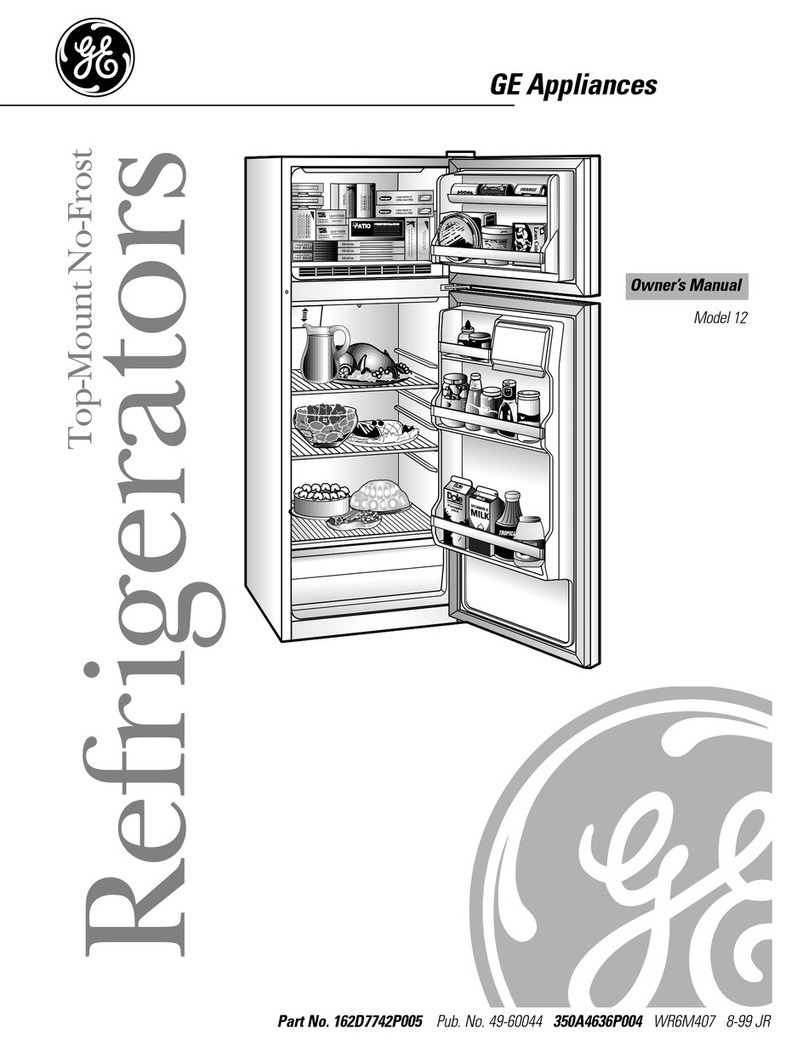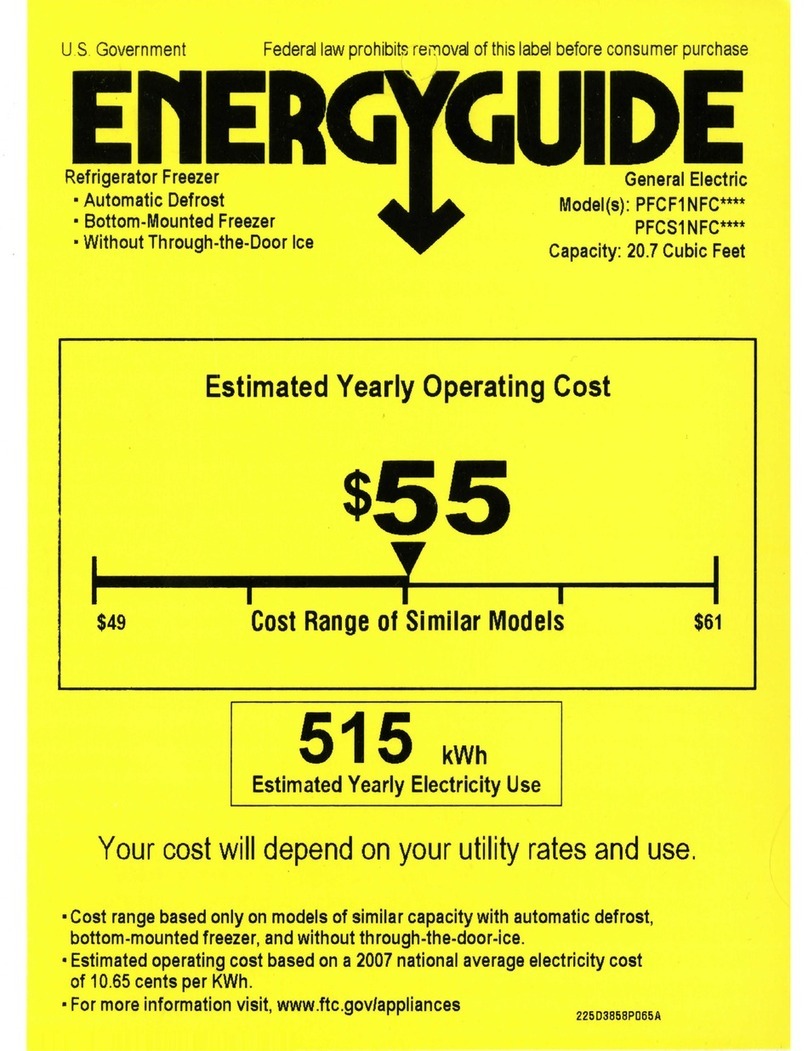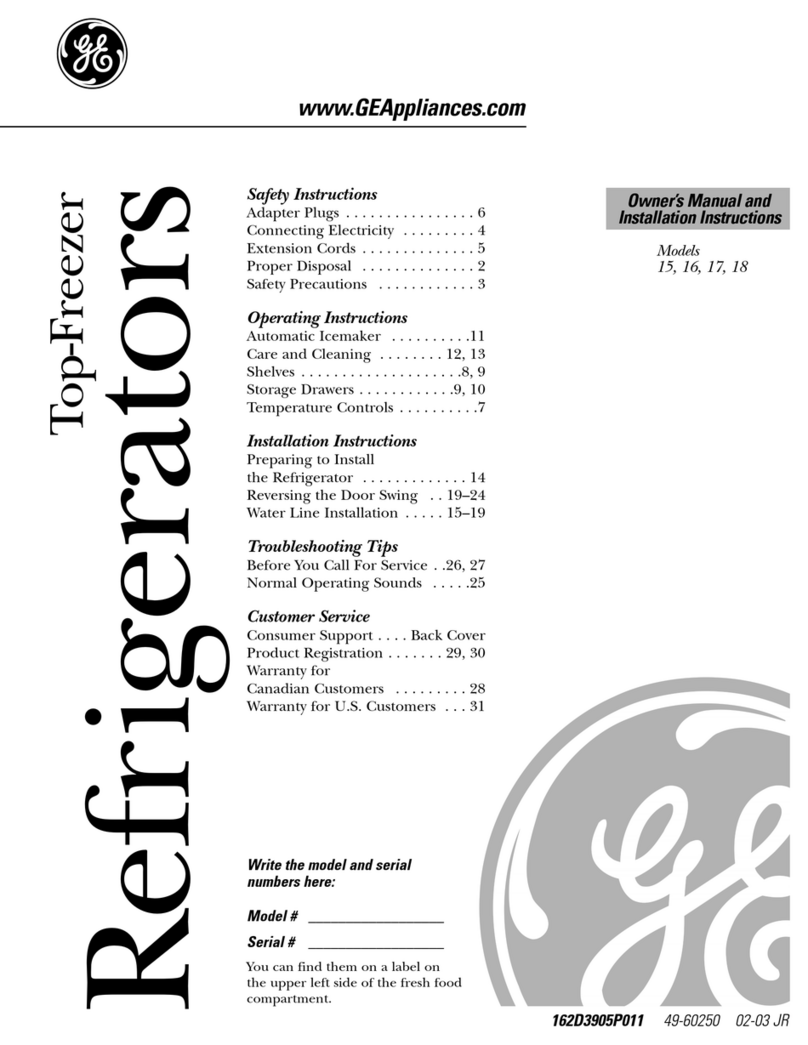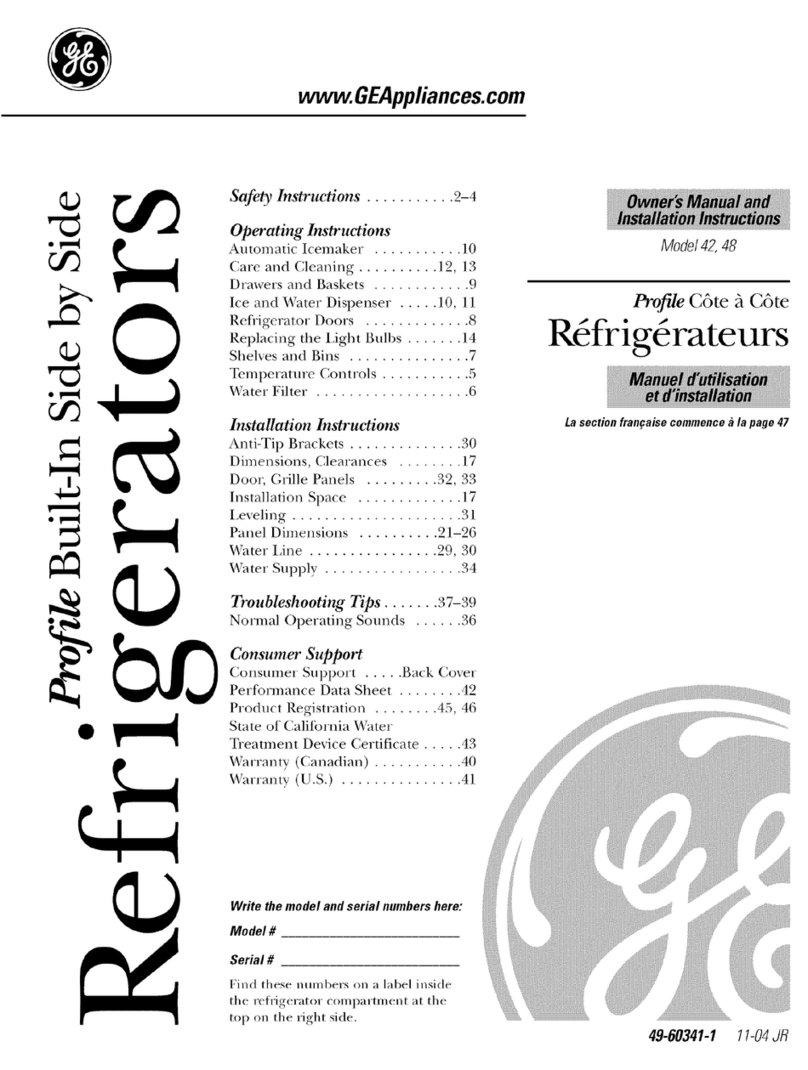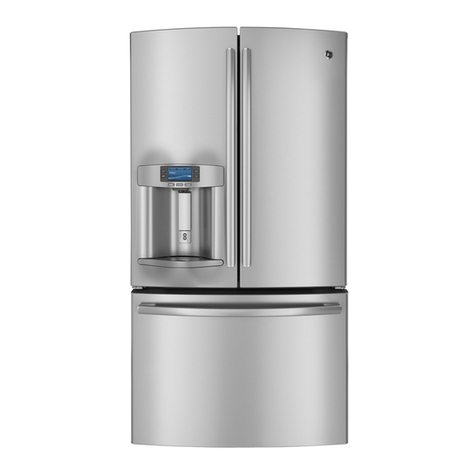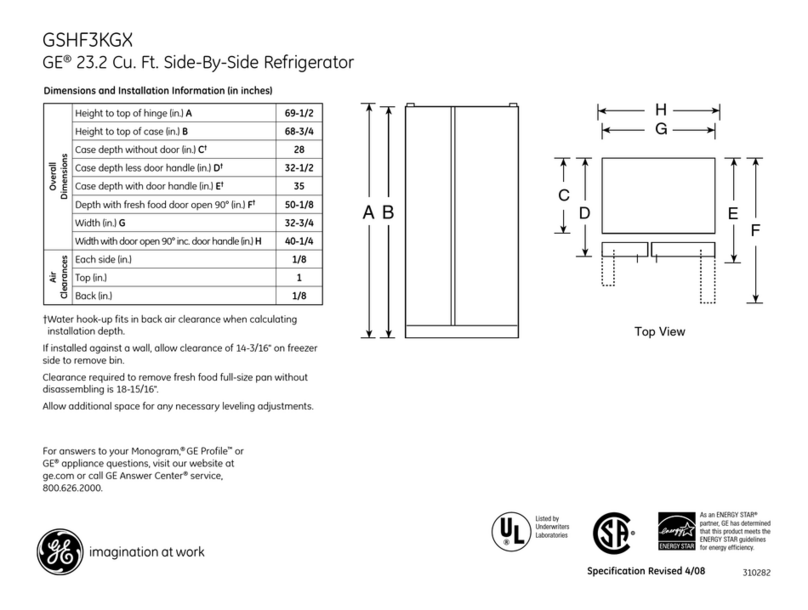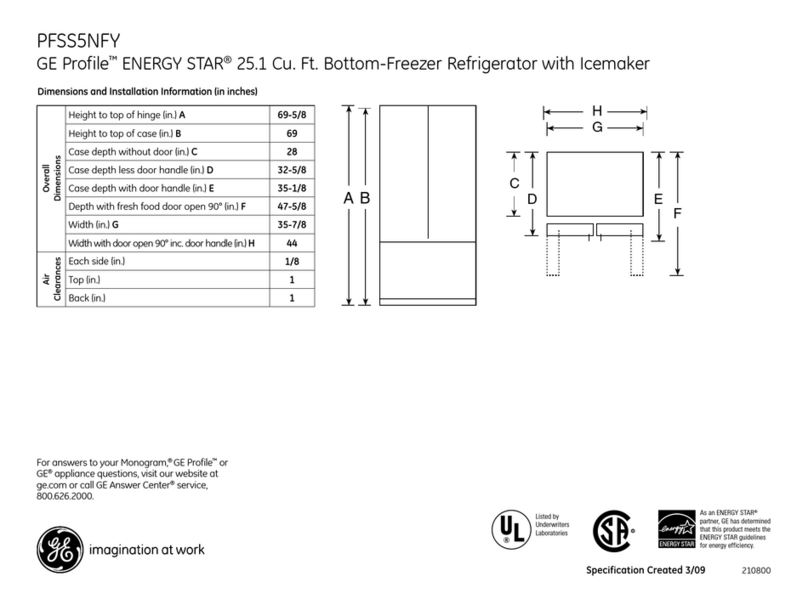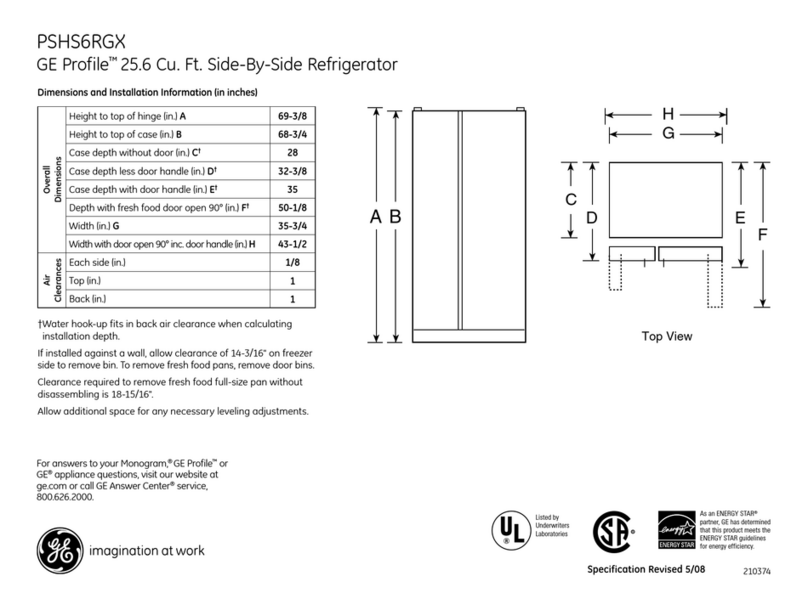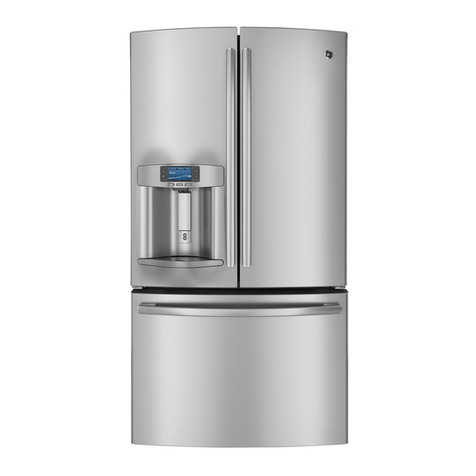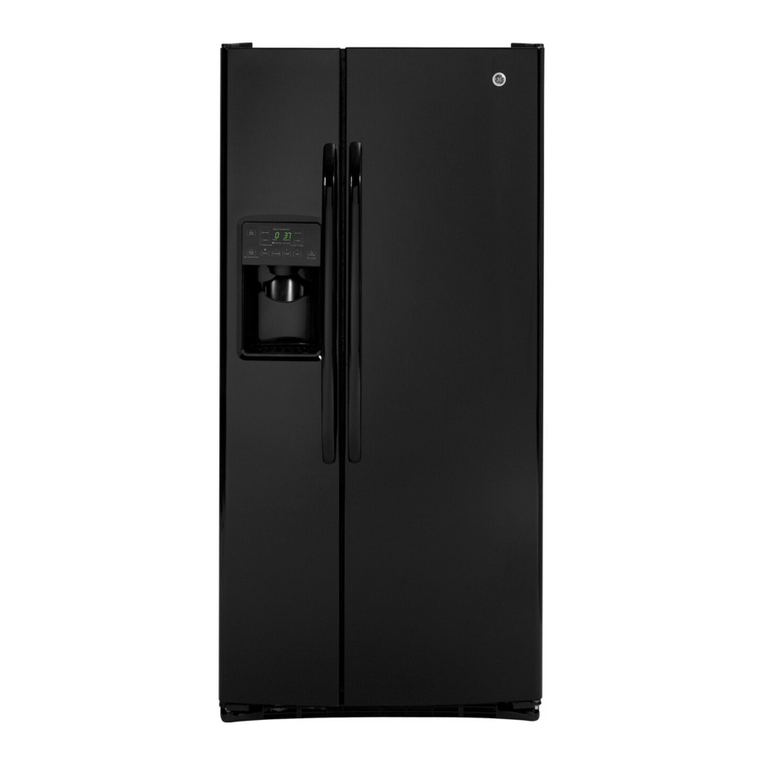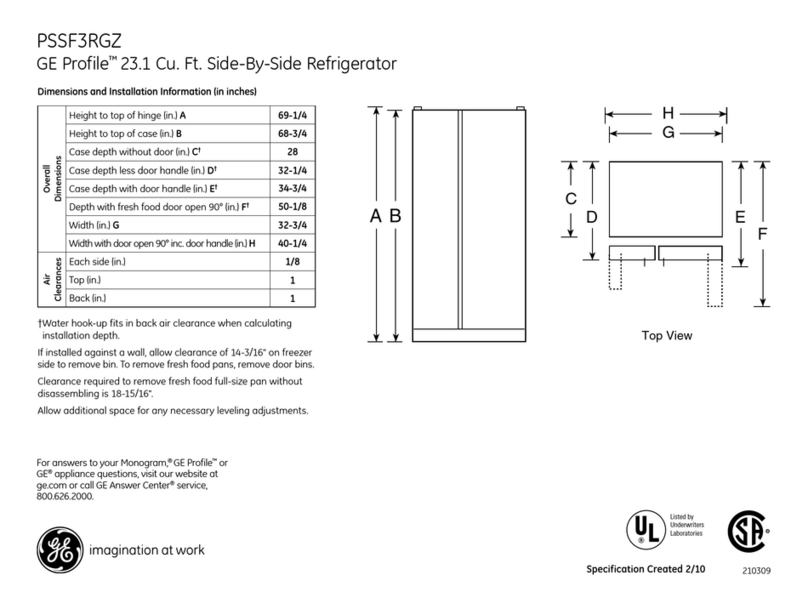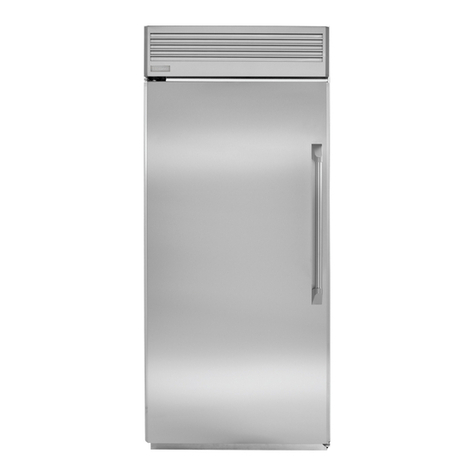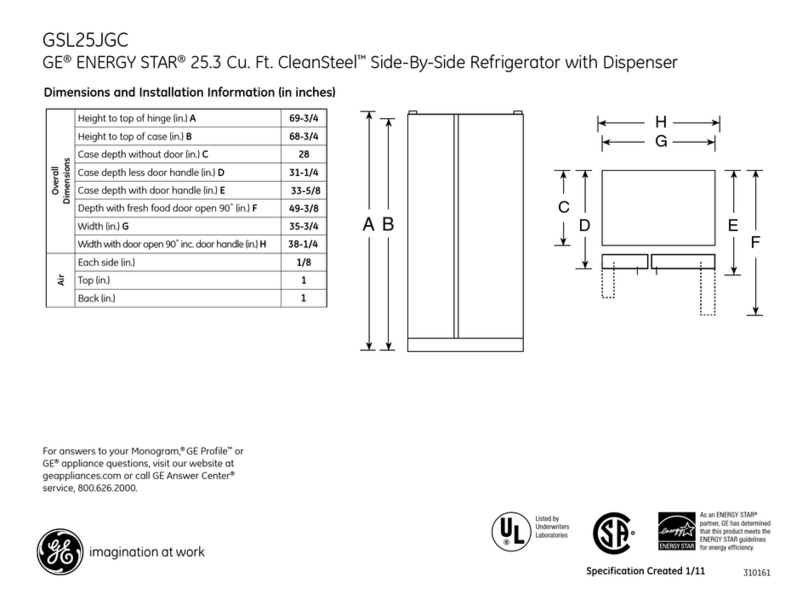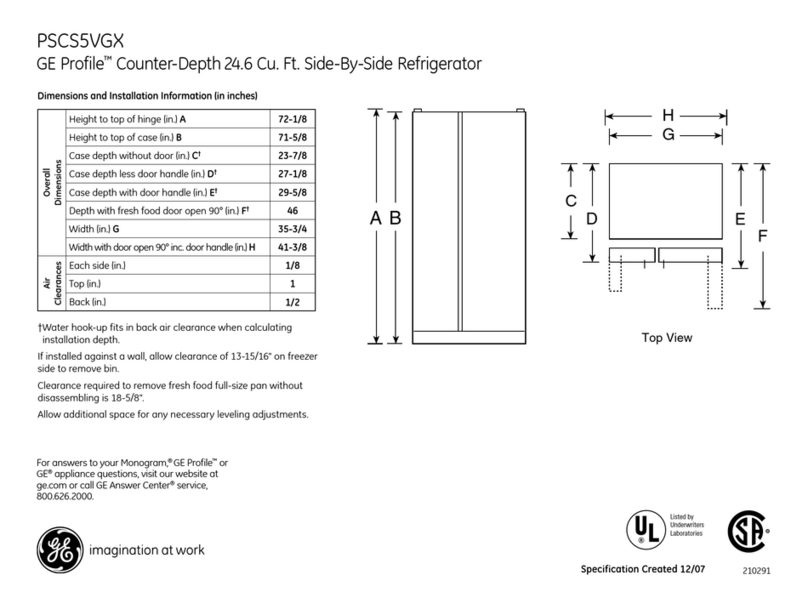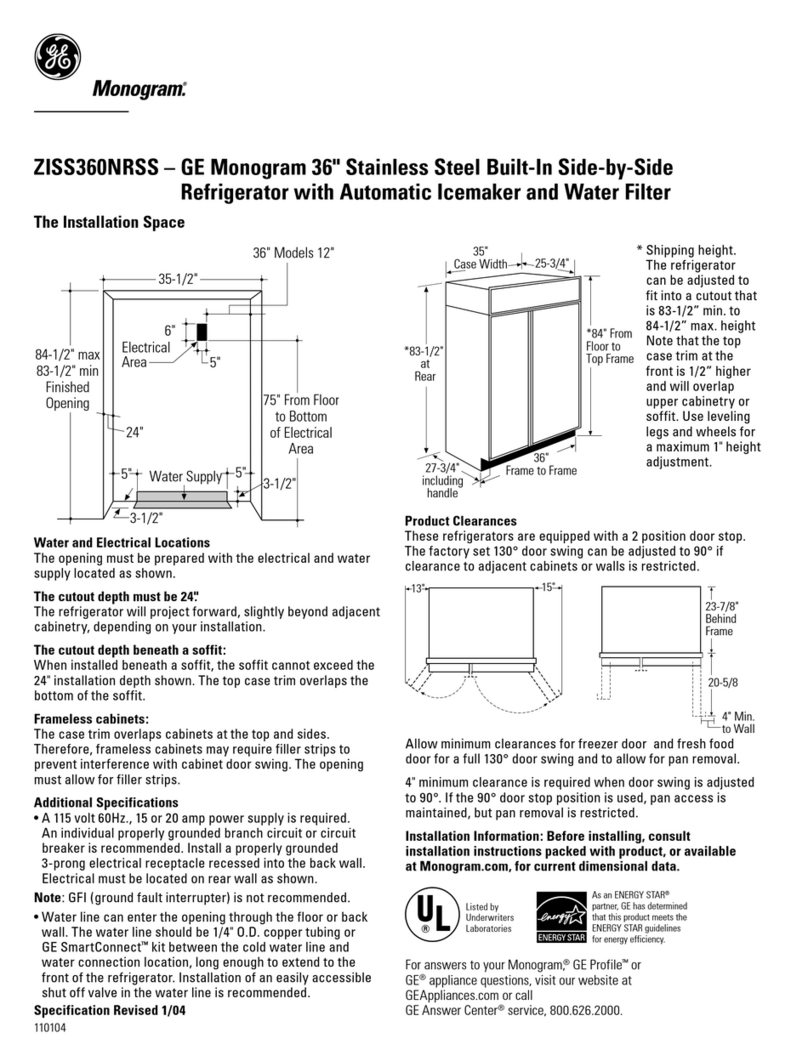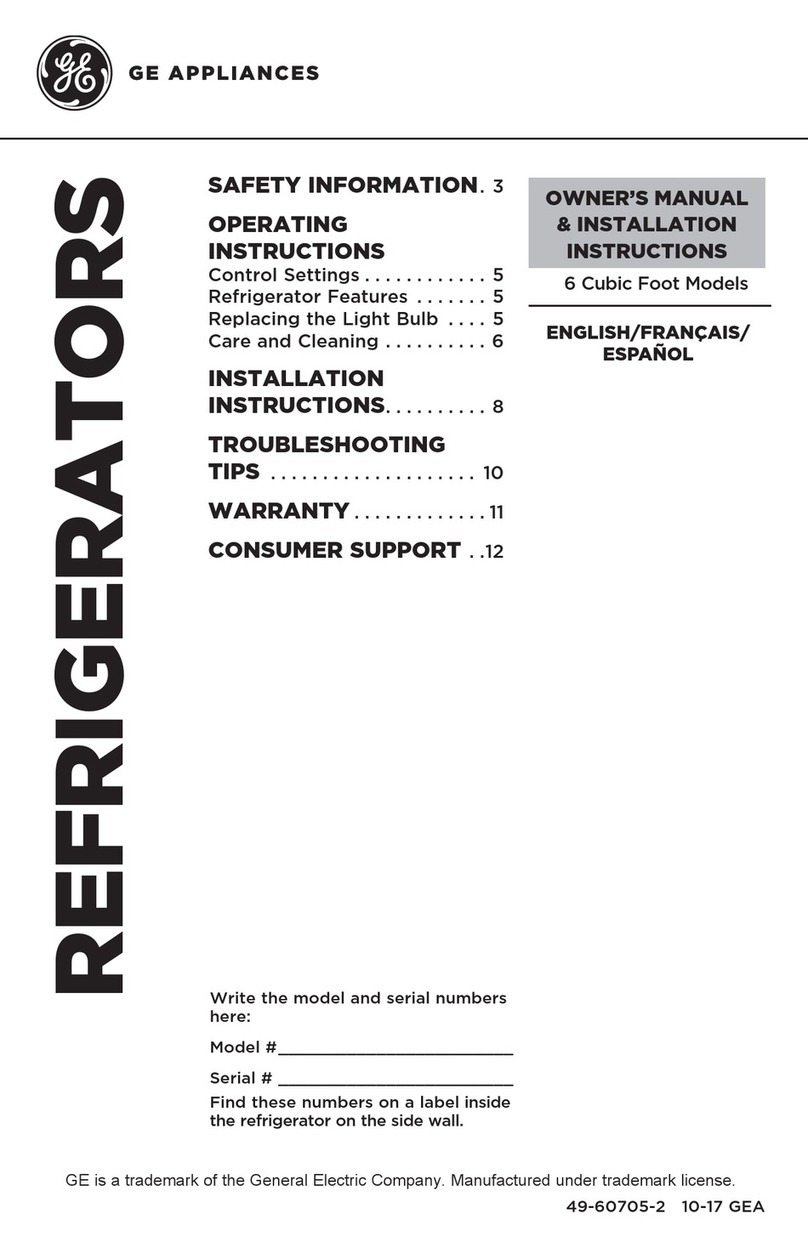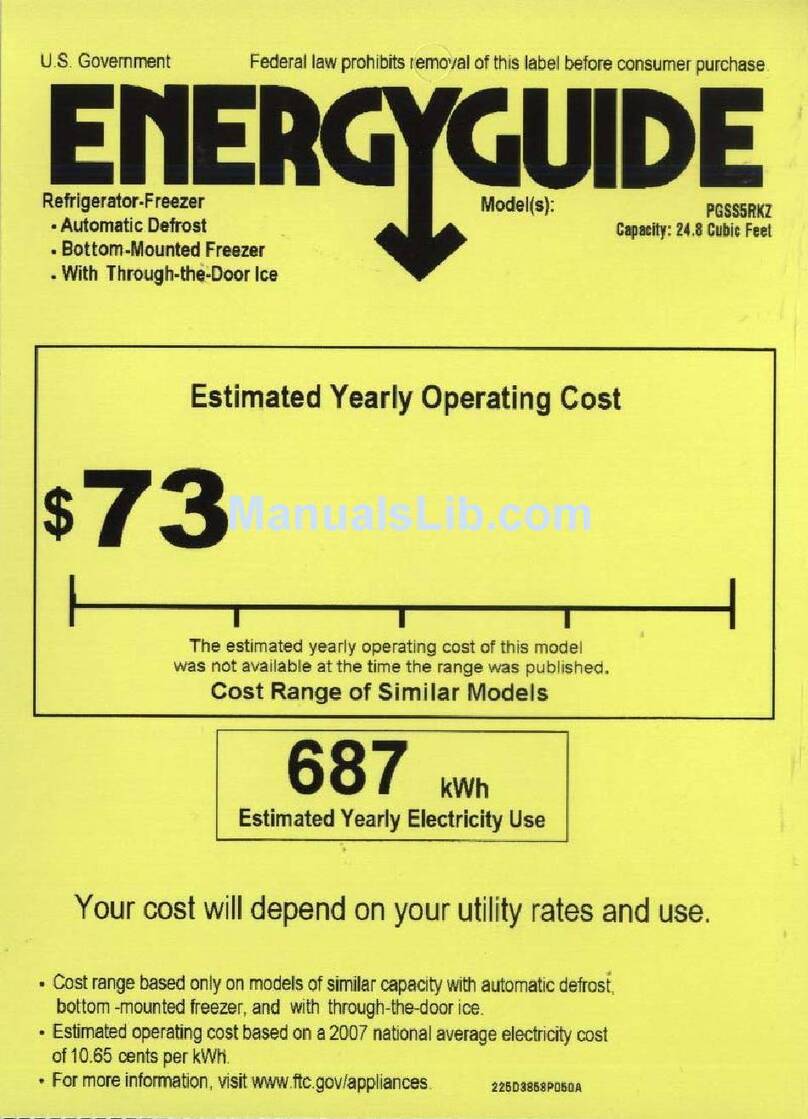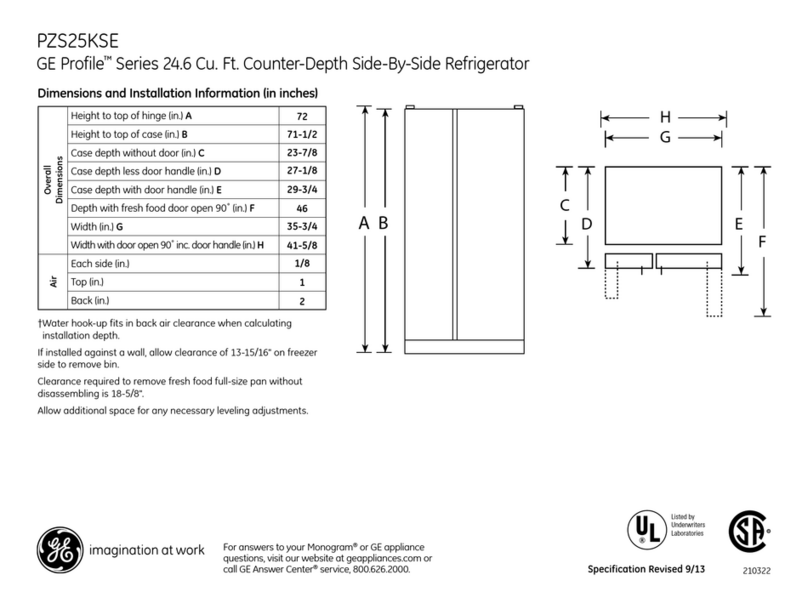Defrosting
Defrost whenever frost on the
wall of the ice tray compartment
becomes 1/4” thick.
Never use a sharp or metallic
instrument to remove frost as it
may damage the cooling coils. (A
punctured cooling coil will cause
serious problems and void the
warranty.) We recommend using
a plastic scraper.
Do not use any electrical device
in defrosting your refrigerator.
To defrost,
remove foods and ice
trays from the ice tray compartment,
put drip tray in place, and set
temperature control dial at “OFF”
position.
Defrosting usually takes a few
hours. To defrost faster, keep the
door open. Also, pouring warm
(not hot) water on the frosted part
may speed defrosting.
Do not use
boiling
water—it
may damage
plastic parts.
After defrosting,
empty water
from the drip tray. Wash the drip
tray in warm water. Wipe the ice
tray compartment with a damp
cloth. Then turn the temperature
control to the desired setting and
return food and ice trays to the
refrigerator.
Note:
If ice buildup is very thick,
it may keep the ice tray compartment
door from opening or closing
completely. Don’t try to force it
open; after defrosting, the door
will open and close easily.
Care
and Cleaning
Cleaning—Inside
Unplug the refrigerator and remove
food, shelf and trays. Wash inside
with warm water and baking soda
solution—about two tablespoons
of baking soda to a quart of water.
Then rinse and dry.
6
Don’t use cleansers such as soaps,
detergents, scouring powder or
spray cleaners—they may cause
odors inside the refrigerator.
Wash ice cube trays, drip tray and
shelf in mild detergent solution and
dry with a soft cloth.
To help prevent odors, leave an
open box of baking soda in the rear
of the refrigerator, on the shelf.
Change the box every three months.
Wipe outside of refrigerator with a
soft cloth dampened with soapy water
or Appliance Polish Wax Cleaner
(Cat. No. WR97X0216), available
from GE Appliance Parts Marts.
Use only mild, soapy water to
clean the door gasket.
Never use acids, chemical thinner,
gasoline, benzine or the like for
cleaning any part of the refrigerator.
Boiling water or benzine may
deform or damage plastic parts.
Do not wash any plastic parts
from your refrigerator in your
automatic dishwasher.
When going on vacation...
For extended vacations or
absences,
unplug the refrigerator
and clean the interior. To prevent
odors, leave an open box of baking
soda inside and leave the door open.
For shorter vacations,
remove
perishable foods and leave the
control at regular setting. However,
if room temperature is expected to
drop below 40°F. follow the same
instructions as for extended
vacations.
When you move...
Disconnect the power cord
from
wall outlet, remove food and defrost
refrigerator. Then clean and dry the
interior.
Secure all loose items
such as ice
trays and drip tray by taping them
securely in place to prevent damage.
Be sure
refrigerator stays in upright
position only
during actual moving
and in van. Refrigerator must be
secured in van to prevent movement.
Protect outside of refrigerator with
blanket.
Questions? Use This Problem Solver
I
PROBLEM
POSSIBLE CAUSE AND REMEDY
REFR.IGERA’lUR
● Not plugged in.
DOES NOT OPERATE
●
Circuit breaker tripped or fuse blown.
TURNS ON AND OFF
*
This is normal. Small refrigerators cycle
FREQUENTLY
more often than larger ones.
SEEMS TO RUN
● Check for proper clearances.
lDO
LONG ● Frequent door openings let cold air escape.
VIBRATION
● If refrigerator vibrates, more than likely it is
not level. Use shims to make it level.
●
On models SC4 and TA4, the left front leg is
adjustable.
CABINET HAS ODOR
●
Foods with strong odors should
be
tightly
covered.
● Check for spoiled food.
● Interior may need cleaning.
.
Keep
an open box of baking
soda in
refrigerator; replace every three months.
If you need more help.. call, toll free:
GE
Answer
Center@/800.626.2000/consumer
information service
—.
————..———
—.
—
